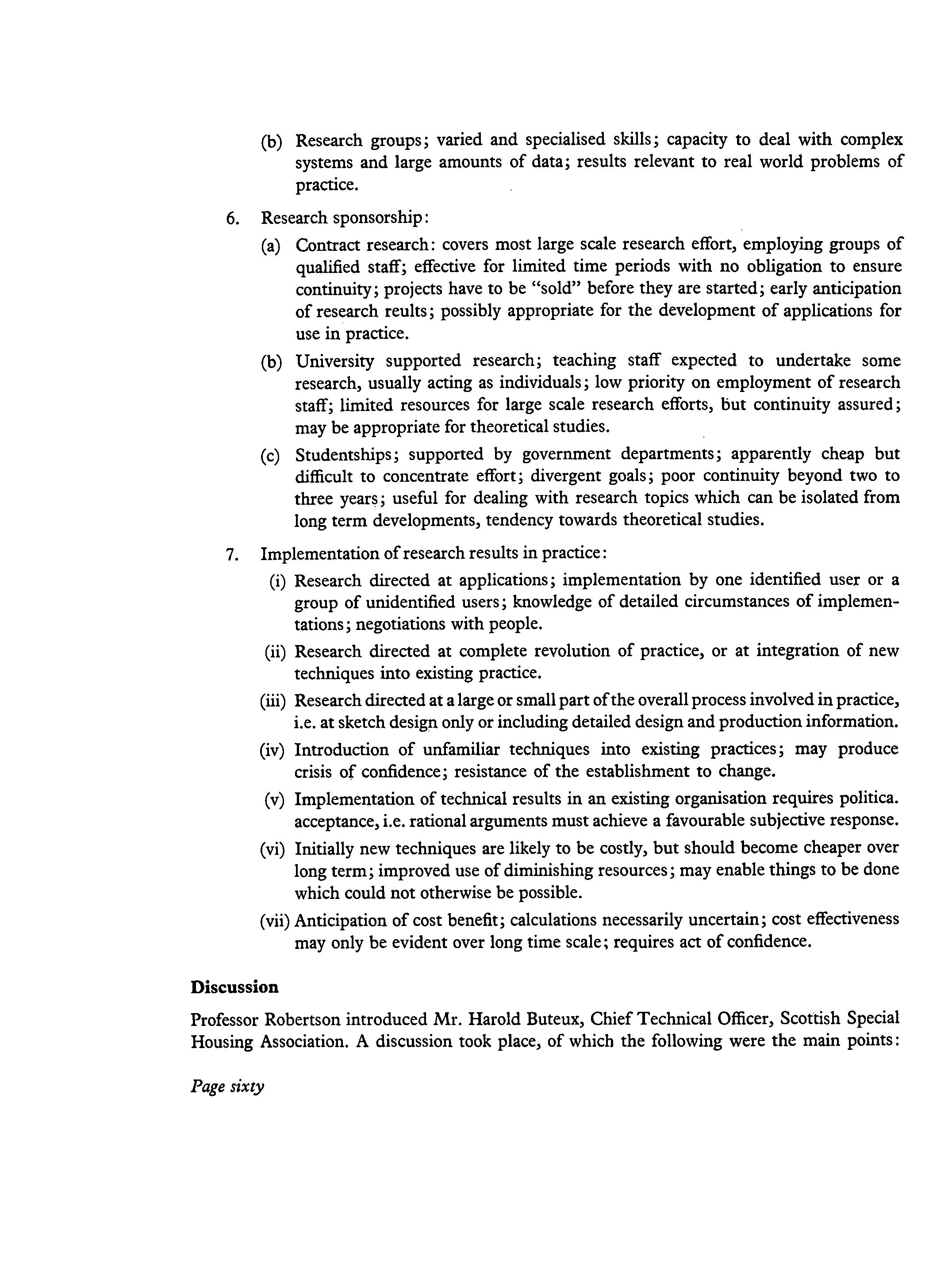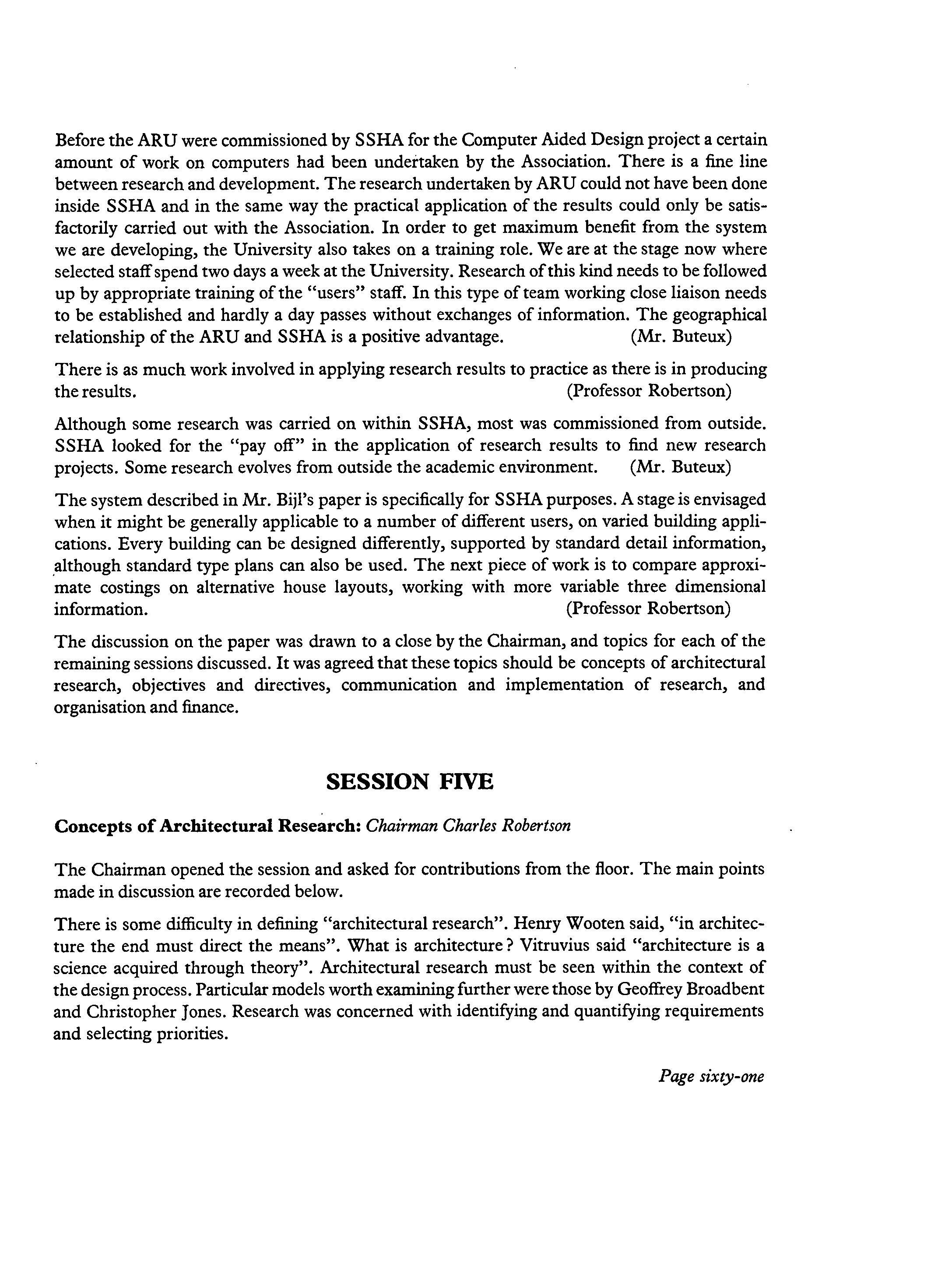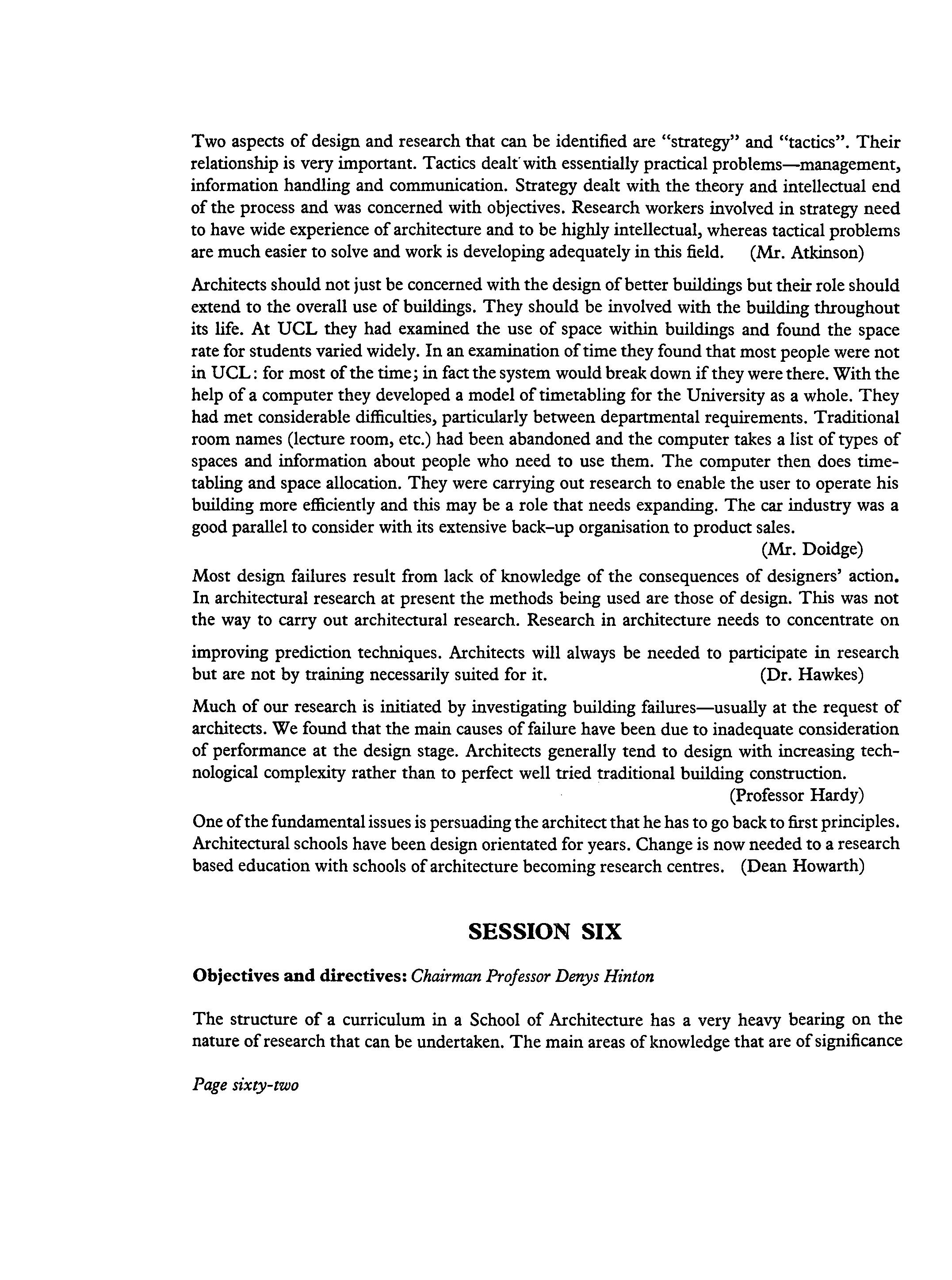
6 minute read
Session 6: Objectives and Directives
(b) Research groups; varied and specialised skills; capacity to deal with complex systems and large amounts of data; results relevant to real world problems of practice. 6. Research sponsorship: Contract research: covers most large scale research effort, employing groups of qualified staff; effective for limited time periods with no obligation to ensure continuity; projects have to be "sold" before they are started; early anticipation of research reults; possibly appropriate for the development of applications for use in practice. University supported research; teaching staff expected to undertake some research, usually acting as individuals; low priority on employment of research staff; limited resources for large scale research efforts, but continuity assured; may be appropriate for theoretical studies. Studentships; supported by government departments; apparently cheap but difficult to concentrate effort; divergent goals; poor continuity beyond two to three years; useful for dealing with research topics which can be isolated from long term developments, tendency towards theoretical studies. 7. Implementation of research results in practice: Research directed at applications; implementation by one identified user or a group of unidentified users; knowledge of detailed circumstances of implementations; negotiations with people. Research directed at complete revolution of practice, or at integration of new techniques into existing practice. Research directed at a large or small part of the overall process involved in practice, i.e. at sketch design only or including detailed design and production information. Introduction of unfamiliar techniques into existing practices; may produce crisis of confidence; resistance of the establishment to change. Implementation of technical results in an existing organisation requires politica. acceptance, i.e. rational arguments must achieve a favourable subjective response. Initially new techniques are likely to be costly, but should become cheaper over long term; improved use of diminishing resources; may enable things to be done which could not otherwise be possible. Anticipation of cost benefit; calculations necessarily uncertain; cost effectiveness may only be evident over long time scale; requires act of confidence.
Discussion
Advertisement
Professor Robertson introduced Mr. Harold Buteux, Chief Technical Officer, Scottish Special Housing Association. A discussion took place, of which the following were the main points:
Page sixty
Before the ARU were commissioned by SSHA for the Computer Aided Design project a certain amount of work on computers had been undertaken by the Association. There is a fine line between research and development. The research undertaken by ARU could not have been done inside SSHA and in the same way the practical application of the results could only be satisfactorily carried out with the Association. In order to get maximum benefit from the system we are developing, the University also takes on a training role. We are at the stage now where selected staff spend two days a week at the University. Research of this kind needs to be followed up by appropriate training of the "users" staff. In this type of team working close liaison needs to be established and hardly a day passes without exchanges of information. The geographical relationship of the ARU and SSHA is a positive advantage. (Mr. Buteux) There is as much work involved in applying research results to practice as there is in producing the results. (Professor Robertson) Although some research was carried on within SSHA, most was commissioned from outside. SSHA looked for the "pay off" in the application of research results to find new research projects. Some research evolves from outside the academic environment. (Mr. Buteux) The system described in Mr. Biji's paper is specifically for SSHA purposes. A stage is envisaged when it might be generally applicable to a number of different users, on varied building applications. Every building can be designed differently, supported by standard detail information, although standard type plans can also be used. The next piece of work is to compare approximate costings on alternative house layouts, working with more variable three dimensional information. (Professor Robertson) The discussion on the paper was drawn to a close by the Chairman, and topics for each of the remaining sessions discussed. It was agreed that these topics should be concepts of architectural research, objectives and directives, communication and implementation of research, and organisation and finance.

SESSION FIVE
Concepts of Architectural Research: Chairman Charles Robertson
The Chairman opened the session and asked for contributions from the floor. The main points made in discussion are recorded below. There is some difficulty in defining "architectural research". Henry Wooten said, "in architecture the end must direct the means". What is architecture? Vitruvius said "architecture is a science acquired through theory". Architectural research must be seen within the context of the design process. Particular models worth examining further were those by Geoffrey Broadbent and Christopher Jones. Research was concerned with identifying and quantifying requirements and selecting priorities.
Page sixty-one
Two aspects of design and research that can be identified are "strategy" and "tactics". Their relationship is very important. Tactics dealt with essentially practical problems—management, information handling and communication. Strategy dealt with the theory and intellectual end of the process and was concerned with objectives. Research workers involved in strategy need to have wide experience of architecture and to be highly intellectual, whereas tactical problems are much easier to solve and work is developing adequately in this field. (Mr. Atkinson) Architects should not just be concerned with the design of better buildings but their role should extend to the overall use of buildings. They should be involved with the building throughout its life. At UCL they had examined the use of space within buildings and found the space rate for students varied widely. In an examination of time they found that most people were not in UCL: for most of the time; in fact the system would break down if they were there. With the help of a computer they developed a model of timetabling for the University as a whole. They had met considerable difficulties, particularly between departmental requirements. Traditional room names (lecture room, etc.) had been abandoned and the computer takes a list of types of spaces and information about people who need to use them. The computer then does timetabling and space allocation. They were carrying Out research to enable the user to operate his building more efficiently and this may be a role that needs expanding. The car industry was a good parallel to consider with its extensive back-up organisation to product sales. (Mr. Doidge) Most design failures result from lack of knowledge of the consequences of designers' action. In architectural research at present the methods being used are those of design. This was not the way to carry out architectural research. Research in architecture needs to concentrate on improving prediction techniques. Architects will always be needed to participate in research but are not by training necessarily suited for it. (Dr. Hawkes) Much of our research is initiated by investigating building failures—usually at the request of architects. We found that the main causes of failure have been due to inadequate consideration of performance at the design stage. Architects generally tend to design with increasing technological complexity rather than to perfect well tried traditional building construction. (Professor Hardy) One of the fundamental issues is persuading the architect that he has to go back to first principles. Architectural schools have been design orientated for years. Change is now needed to a research based education with schools of architecture becoming research centres. (Dean Howarth)

SESSION SIX
Objectives and directives: Chairman Professor Denys Hinton
The structure of a curriculum in a School of Architecture has a very heavy bearing on the nature of research that can be undertaken. The main areas of knowledge that are of significance
Page sixty-two










